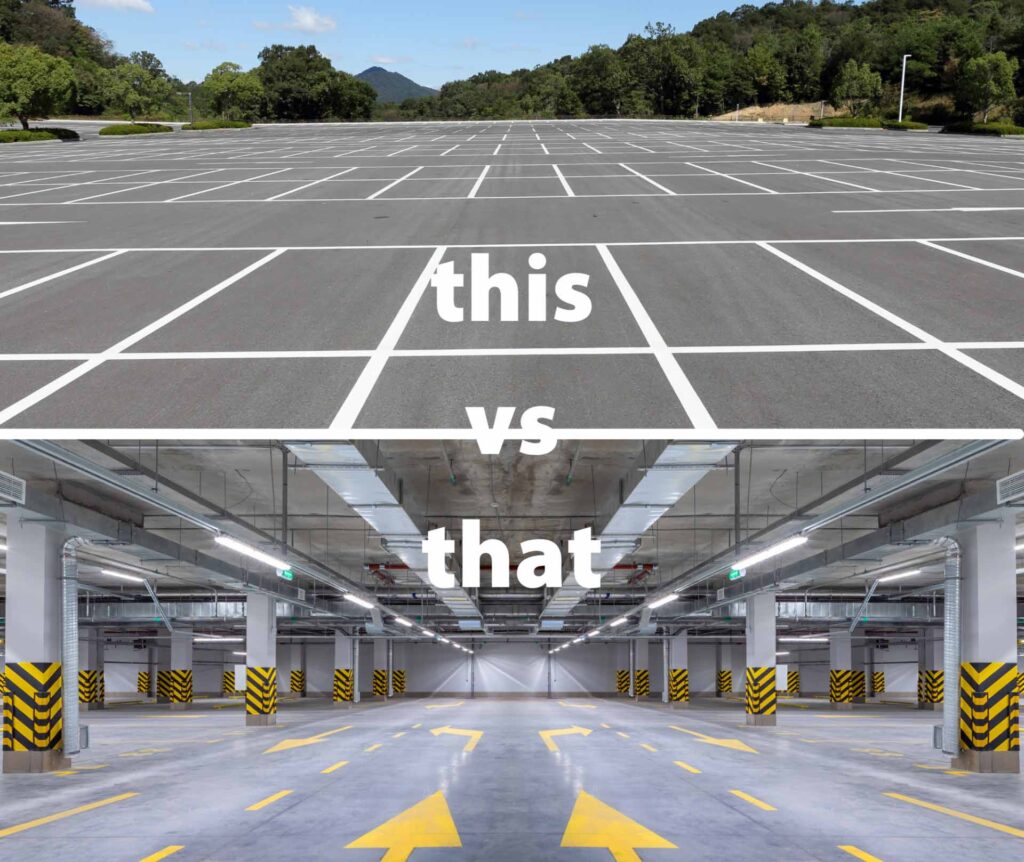
This vs. that: underground parking versus at-grade parking
Here’s how to determine whether surface parking vs. underground parking is right for your project
When it’s planning time for your next commercial construction project, considering parking solutions is a vital step in finalizing your vision. And it’s nothing to be taken lightly; the need for ample parking for function, marketability and code-compliance is important for any commercial building. But how can you know which type of parking is right for you? Is underground parking the better solution, or perhaps an above-ground garage or surface parking? It turns out there are a lot of factors to consider when making your determination. Our experts pulled together a comparison to help you make informed parking decisions for your build.
Comparing and contrasting surface parking vs. underground parking
Considerations for underground parking
- Underground parking is more expensive than at-grade parking. Underground garages tend to cost more than those built at-grade because of the expense of excavation and below-grade parking structure.
- Parking that is hidden underground tends to foster a more aesthetically pleasing above ground look and feel.
- Underground parking can increase parking capacity to scale for increased customer needs when land space at-grade is limited.
- Every level below ground necessary for your underground parking increases total costs incrementally. For that reason, below-ground parking garages often do not exceed two levels below grade.
- The average cost per parking space in an underground parking lot ranges from $25,000 to $50,000, depending on site-specific conditions.
- Structural support needed for below-ground garages can substantially drive costs upward, as up to 70% of a parking garage’s cost is tied into the structural system. This is necessary to support buildings above the parking garage.
- Below grade parking also must address structural issues related to groundwater and shoring.
Considerations for at-grade parking
- Surface parking tends to be less expensive than either an above-ground parking garage or underground parking structure.
- Multi-level parking garages require a foundation and structural system robust enough to support multiple levels of vehicles, which comes at a higher cost than surface parking but less than below-ground parking.
- Above-ground parking structures can be an economical choice, particularly if the land does not require much preparation. Costs can increase for site clearing, site grading or required demolition of existing structures.
- A surface lot parking space costs an average of $1,500 to $3,000 per stall if minimal site preparation is required for the surface lot. The need for site clearing, site grading and more extensive site preparation can push that cost substantially higher.
- Surface lots are typically paved in asphalt, which can cost about $4 per square foot. Gravel can be a cheaper alternative but is not allowed in most municipalities, and concrete can be up to $7 per square foot on average.
- Surface lots or parking structures take up valuable land space and may simply not be an option when land is scarce or too expensive, such as in urban centers or other high-density areas.
- Above-ground parking structures may require considerations for facade design to comply with zoning requirements, which can drive up costs.
Which parking solutions are right for you?
Determining the best parking solution for your needs, whether for tenants, customers or employees, is a standard part of the construction process. It requires comparing and contrasting your options with an eye toward budget, aesthetics and practicality. Hopefully, this comparison makes the decision-making process a bit easier. But if you’re looking for professional consultation to come to the right conclusion, consider putting our design-build team to work for you. We’ll help you weigh all of the pros and cons of each choice within the budget and timeline considerations you have in mind.